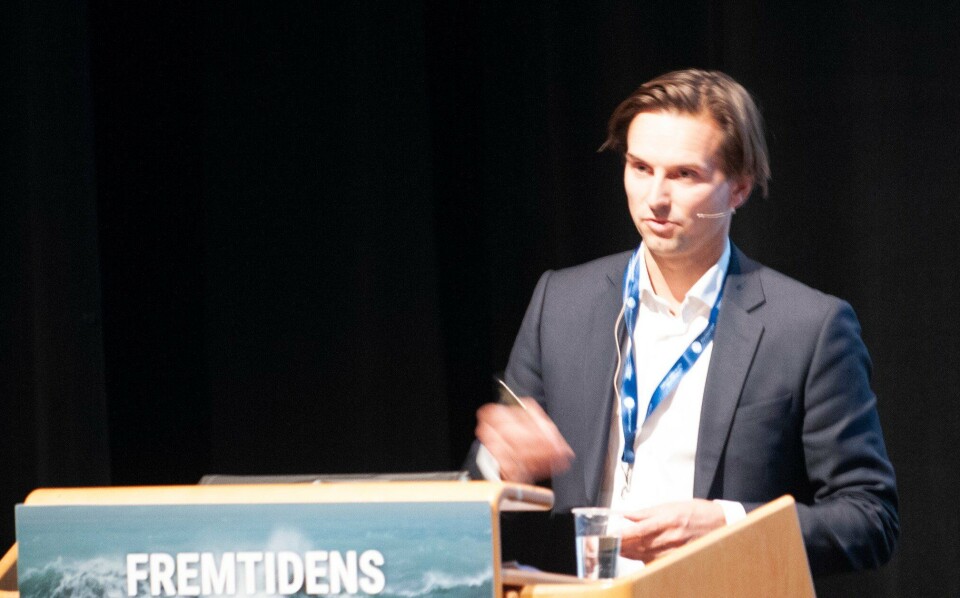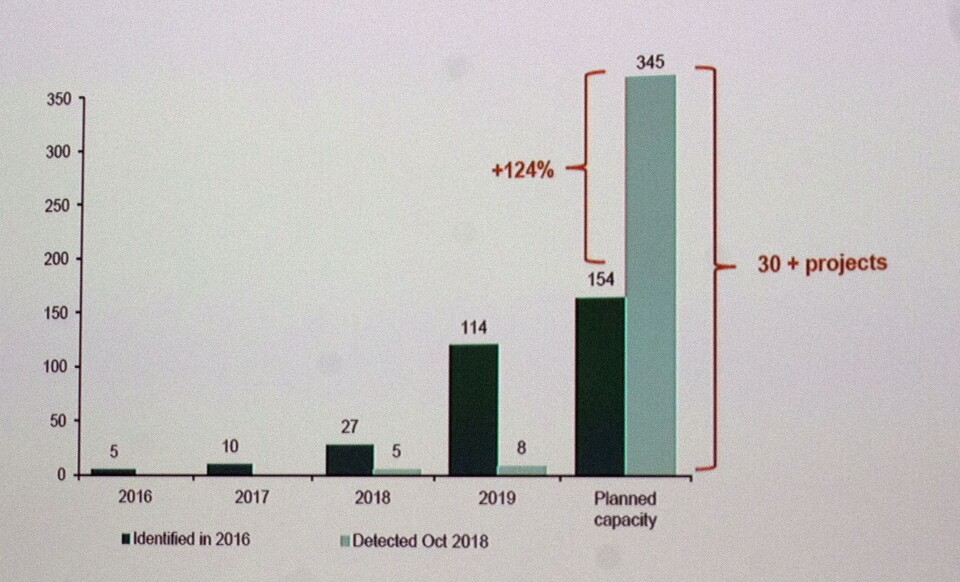
RAS salmon production ‘on course for 345,000 tonnes’
Analysts at Norway’s DNB bank turned out to be rather over-optimistic in 2016 when they predicted that by next year 114,000 tonnes of salmon would be being grown in on-land facilities. In fact, the total biomass will be around 8,000 tonnes.
But that hasn’t dented their confidence that significant tonnage will eventually be produced in recirculating aquaculture systems (RAS) around the world.
During the Fifth Conference on Recirculating Aquaculture being held in Sunndalsøra, Norway this week, DNB’s Aelxander Aukner said analysts are updating the 2016 report. And while they have pushed back the timescale, they have also significantly upgraded volume estimates.
“Two years ago, we identified 20 different projects around the world, which would provide a production of 154,000 tonnes of biomass. Our projection for 2019 was that it would stand at 114,000 tonnes. That figure we see now instead will stand at about 8,000 tonnes,” he said.
The analyst nevertheless believes that it will grow a lot in the coming years.
New projects added
“You tend to overestimate changes in the short term, while underestimating changes in the long term,” he stated.
Of the 20 projects they saw in 2016, only 10 remain, but there have been new ones added in the interim and several have scaled up. Therefore, potential biomass has significantly increased.
“We have now identified a total of 30 different projects, which together will produce a total of 345,000 tonnes, if realised,” said Aukner.

And he has more faith now that a greater number of the projects will come to fruition.
“We’re seeing that there are no longer any ‘garage’ projects with drawings on a napkin, but projects that have serious financial backing.”
Admittedly, banks are not yet heavily invested.
“I only know one project that is part-financed by a bank and it’s Atlantic Sapphire in Florida where DNB is involved," he said.
Willingness to invest
Aukner believes that there is currently a great willingness to invest in RAS technology.
“In the last three years, NOK4.6 billion has been invested in Norway in RAS plants, including hatcheries. If you transfer the volumes and costs, it will cost NOK35 billion to build up to the 345,000 tonnes projected.”
The analyst also made a comparison about what listed salmon companies have invested in the last six years.
“They have invested a total of NOK28.5 billion, and during the period, their production has increased by only 140,000 tonnes. Would they perhaps have been better using that on land-based production instead,” he asked rhetorically.
Aukner is nevertheless aware that the only reason why it might be possible for land-based production to pay off is that it is persistently costly to produce in the sea as a result of lice and other biological challenges.
Challenges in the sea
“Growing traditionally is expensive. If you solve the challenge at sea, then sea will be cheap again and land-based will be a niche production. So far, everything suggests that the challenges in the sea will persist,” he said.
In September, Swiss Alpine Fish harvested its first ‘Swiss Lachs’ Atlantic salmon from its RAS facility in southern Switzerland, and charged a very high price for the fish. AquaMaof is harvesting some in Poland, and Langsand Salmon in Denmark is harvesting 250 tonnes this year, but will exploit full capacity of 1,000 tonnes in 2019.
In the United States, the Superior Fresh aquaponics facility in Wisconsin is producing 100 tonnes of salmon annually, along with 900 tonnes of lettuce.
Atlantic Sapphire in Florida plans to set eggs in the plant later this year, and Fredrikstad Seafood near Oslo will also insert fish this year.
“The biggest bottleneck in the future will be people with operational experience. This is not easy,” concluded Aukner.























































